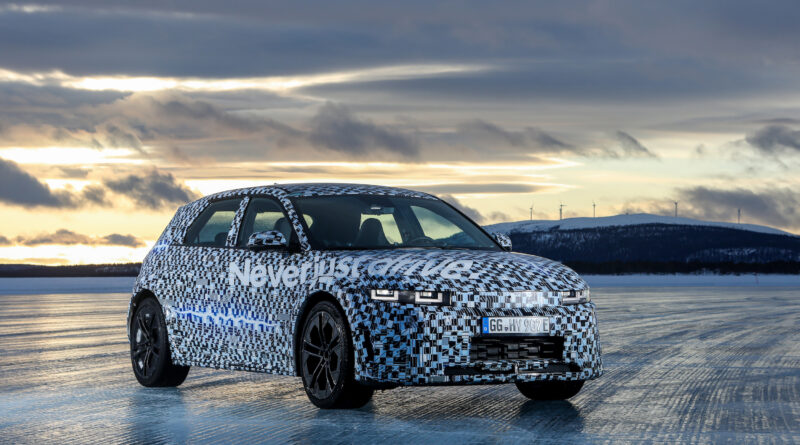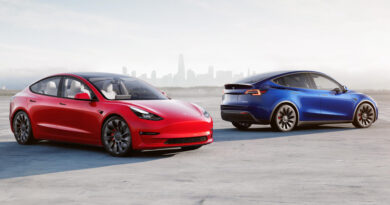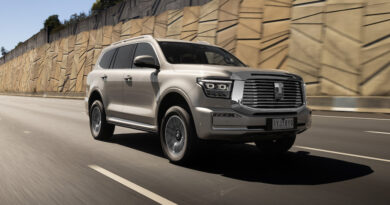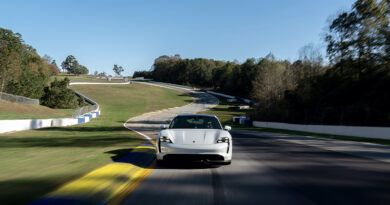Hyundai Ioniq 5 N prototype driven. Is this the makings of an EV masterpiece?
Hyundai’s Ioniq 5 N is destined to become an instant high-performance EV icon. It won’t arrive in Australia until sometime in the first half of 2024, but it’s already shaping up as a half-price rival to the Porsche Taycan.
Though the Ioniq 5 N is the first-ever EV from the Korean brand’s fun-loving N division, this hefty all-wheel-drive hatchback has more of what keen drivers want most; excitement, involvement, entertainment and value.
Based on the dual-motor version of Hyundai Motor Group’s EV-only E-GMP platform that’s the basis for the existing Techniq and Epiq grades of the Ioniq 5, as well as the Kia EV6 GT and Genesis GV60, straight-line speed is guaranteed.
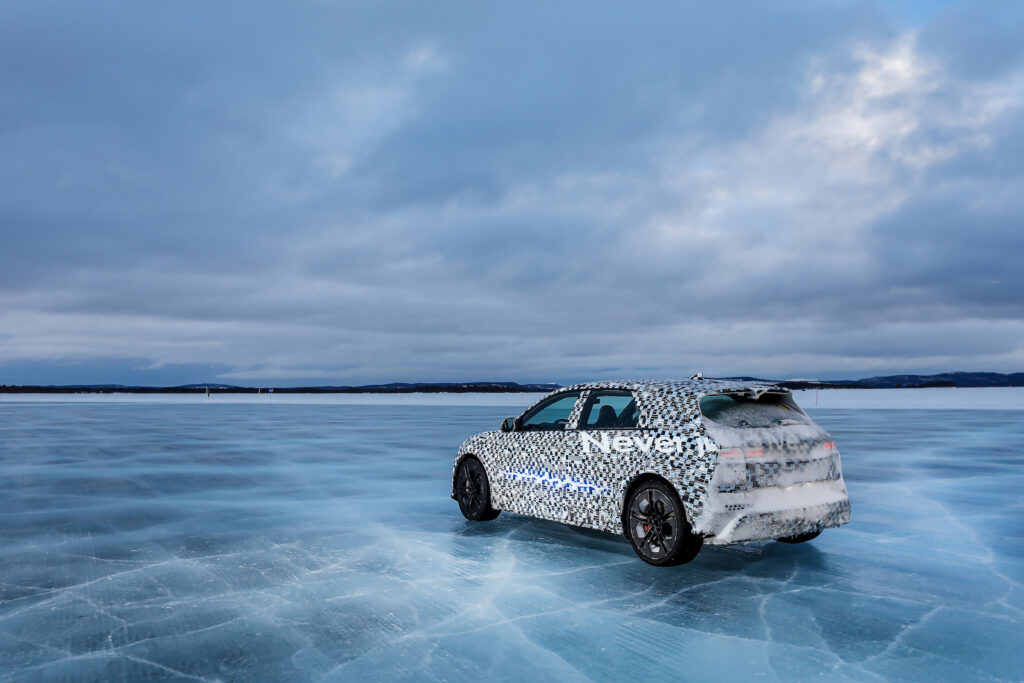
But N division engineers have added handling to go with it. The car rides lower on stiffer suspension, and wears wide tyres on 21-inch rims. Inside those wheels are much bigger brakes. And there’s a new rack to provide speedier steering. Bodywork changes included new bumpers, sills and a rear spoiler.
This is a pretty standard list of high-performance chassis modifications, but the N division has really embraced the new tuning opportunies that an EV offers. They’ve developed a range of software controlled systems designed to make the Ioniq 5 N something really special to drive. Many were previewed in Hyundai’s 2022 ‘rolling lab’ concept EV, the Ioniq 6-based RN22e.
The aim with the Ioniq 5 N is to make the Hyundai’s dynamic ability accessible to averagely talented drivers, at the same time as providing the possibility to easily alter its set-up to suit a broad range of scenarios. More on these later…
The Ioniq 5 N will make its first official appearance in public at the Goodwood Festival of Speed in the UK in July. Hyundai is keeping many of the car’s specifications secret.

But we have driven advanced prototypes of the Ioniq 5 N at Hyundai’s winter test centre in the north of Sweden, very close to the Arctic Circle, and spent time with the N division engineers and execs who were there.
Here’s all we’ve found out about the Ioniq 5 N…
Power and performance
One of the things Hyundai isn’t disclosing just yet is the Ioniq 5 N’s maximum power output. After discussions with N engineers, we understand it will be very, very close to 450kW.
This is a fraction more than the 430kW output of the Kia EV6 GT, which like the Hyundai is built on the E-GMP platform. It’s also slightly higher than the 430kW of the RN22e. As in the concept, the Ioniq 5 N’s rear motor will be significantly more powerful than the front motor.

Though the Ioniq 5 N will weigh around 2.5 tonnes, the traction provided by its massive Pirelli rubber means its 0-100km/h time may be better than the 3.5 seconds of the Kia EV6 GT. It’s sure to be very close…
Hyundai Ioniq 5 N price
Around $100,000 is what Hyundai Australia is expected to be aiming for. It’s a price that, unsurprisingly, is very close to what Kia asks for the EV6 GT.
But with the Ioniq 5 N’s arrival in Australia around a year away, it’s impossible to be absolutely certain what it will cost, especially given the raft of price increases we’ve seen with many cars in recent years.
What is for sure is that the Hyundai will cost much less than half as much as a Porsche Taycan with equivalent performance.
N Drift Optimiser on ice…
The system Hyundai was keenest to demonstrate in Sweden was N Drift Optimiser. Developing it wasn’t simple, according to development engineer Chris Nigemeier.
“In the beginning, it was very, very difficult to drift this car,” he says. That’s not the case now, even though work on the N Drift Optimiser software isn’t quite finished. “You can still spin, but it’s not that easy…”

The system initiates a tail slide by briefly using the regenerative braking of the rear motor; it has an effect akin to applying brakes only to the rear wheels. Once the car is sliding sideways, drive is mostly to the rear wheels. The cleverness of the system is that it uses data from the steering angle sensor to figure out when to add front motor power, neatly stabilising the slide.
After a little practice, sideways laps of the large circle scraped on the surface of the test centre’s icy lake are not difficult.

Some of the other electronic systems in the Ioniq 5 N were not advanced enough to be demonstrated in Sweden. If they’re as good as N Drift Optimiser, they’ll be very impressive.
ICE imitation
The N division team has also developed a system intended to make their EV feel familiar to an ICE driver. Though it’s 100 percent synthetic, the virtual experience is very convincing.
There are three components to the tech, and they work together in pitch-perfect harmony. They provide familiar audio and visual cues, while accurately simulating the behaviour of an ICE-powered car with a double-clutch transmission.

In the N driving mode a tachometer, redlined at 7000rpm, appears in the centre of the instrument display. An electronic engine sound, which doesn’t attempt to exactly mimic an ICE, provides the audio. Ioniq 5 N drivers will be able to choose from a variety of sounds, though only one – called Blue – was available in the prototype car.
When manual mode is chosen, the paddle shifters can be used to change up and down through six or seven virtual gears. The mimicry is uncanny.
There’s a brief pause in power delivery when gears shift. Going up, there’s less torque in the higher gear. Shifting down, there’s an increase in virtual engine braking. You can even hear when the rear tyres lose traction, which happens frequently on ice and snow.
Those who are already EV converts may see it is inauthentic and awful, but ICE lovers are likely to be charmed.
Ioniq 5 N battery and range
Like other E-GMP-based cars, the Ioniq 5 N will have an 800-volt battery pack, and the leading fast-charging rates that come with it (Hyundai quotes 350kW, but the maximum charge rate is about 235kW or 240kW).

But Hyundai isn’t yet telling exactly how much energy the pack will store, but it won’t be exactly the same as the current Ioniq 5; expect more than the regular car’s 77.4kWh.
Hyundai executive technical advisor Albert Biermann says the Ioniq 5 N will have a next-generation pack. “We have a higher energy density,” he says. “We can get more energy in the same packaging.”
While the battery pack may store a few more kWh don’t think the N will have a massive driving range.
Its wide tyres and aerodynamic add-ons ensure it’ll consume more energy than a regular Ioniq 5. Around 400km on the WLTP test cycle, maybe a little less, is what we expect.
Final thoughts on the Hyundai Ioniq 5 N
Though there’s a lot still left to learn about the Ioniq 5 N, the car clearly has the makings of a masterpiece. With its combination of stellar performance, dynamic ability and (relative) affordability, it could come to be seen as the Impreza WRX of the EV era.


